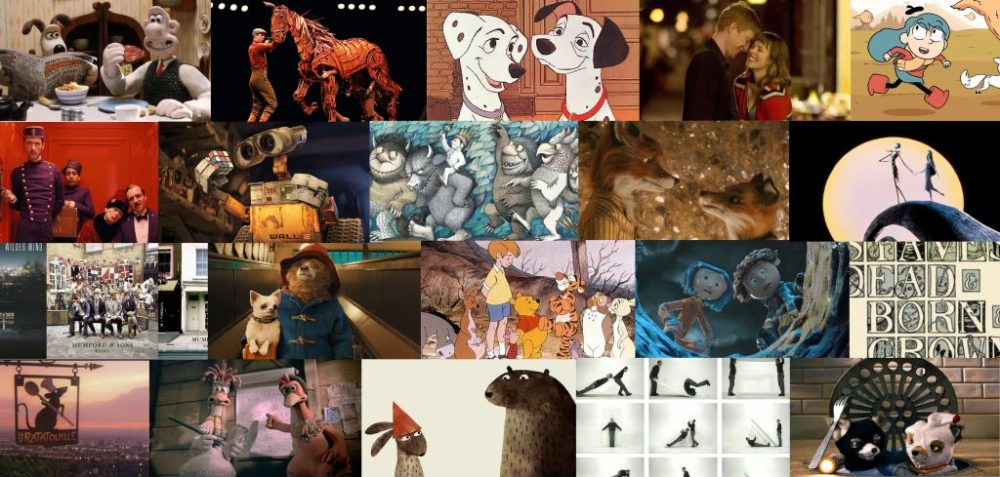























We animated several seconds even though we know we won’t need that much. This means for the two shots that include the carousel moving – when he looks through the camera and when he arrives in the colourful world, we can choice of which seconds of footage to use.









Some initial designs by others in the team:



This week is all about preparing assets for the stop motion section and doing our first test. On Monday, we collectively designed the carousel, which is the first thing the character sees when he sees into the colourful world. We all brought in lots of materials such as coloured card, tissue paper, buttons, pipe cleaners, string etc, so that we could see lots of colour and texture options while designing assets. Deciding the colour scheme for the carousel was the hardest part, but it helped to look at lots of references on Pinterest. It needs to be colourful and inviting, and also familiar as a traditional carousel.





This is our first test animation of the carousel, with a simple background and another funfair ride in the midground just as a draft. The main issue is that the carousel is too big to for the shot we want. Other than that, the animation is pretty successful. We added little paper bands to the backs of the horses so that they could slide up and down the golden poles (coffee stirrers from the cafe). Animating it quite fiddly but looks quite effective I think. Going forward, as well as the smaller carousel, it’ll also be important to make sure that isn’t moving is secure.
We decided the next step was to create an animatic, which just needed to be the most important few keyframes for each shot, held for the length of that shot. To do this we needed to make the shot list even shorter, but we managed to condense it even further into fourteen key moments and make a storyboard together:


We shared the keyframes among us to turn into full-sized drawings, and then I put them together into an animatic:
An interesting development that came from making this animatic was actually a stylistic decision. We all really liked Evelyn’s drawing for her keyframes, which we done digitally but looked like they’d been made pastel or charcoal:


It reminded me of William Kentridge’s animation, which I shared with the group:
If we adopt this sort of style for the 2D section at the start, the animation as a whole will maintain a handmade feel throughout. That would help to unify the two different animation mediums, while still keeping the important contrast between the black and white 2D section and the colourful stop motion section.
While finalising the story, we were recommended to make a shot list, and I managed to condense our story down to this:
I also had a go at starting to figure out timings:

We started discussing how the character should look today. We mostly imagined him being fairly minimalistic, putting the emphasis in the story on the funfair and what happens to him. Anika drew up a potential design, along with a few alternative details, and then a silhouette version, so we had various visual options to explore:


Finally this week, after discussing many options for the ending of our animation and getting tutors to explain exactly what was missing from our story, got the green light for the story. One element we really wanted to include was to somehow loop back to the image of the camera that gets the camera into the colourful funfair, but having worked out the timings a little, it just wouldn’t fit without making the rest of it too fast.

We’re now at the stage of developing the story and visualising various elements.

This is a quick sketch of my initial thoughts for the stop motion section, involving paper cut outs on a multiplane. By having the character and the background elements on separate layers, it’ll be easier to animate the parts that move (e.g. the character, the funfair rides) without moving the parts that don’t (e.g. the sky, the ground).
If the stop motion part is made with paper cut outs, I really like the idea of leaning into that miniature, material world by using a variety of different materials and textures, such as buttons, ribbons etc. It would make an even starker contrast to the black and white world of the 2D section, and create a cuteness that goes against the sinister nature of the funfair itself.
We also have an animatic, made my Jocasta, for the beginning of our story:
This is the new version of the story, after discussing together and with tutors:
The main issue we have at the moment is how to end our animation. We want to make it clear that there is something sinister about the colourful version of the fun fair, and having a piece of it drift back into the black and white world isn’t quite dramatic enough. We think he should get trapped there in some way, so I added this idea of the camera disappearing, taking away his opportunity of returning home. But is that spooky enough, and is is clear enough? How can we show that this is somehow an intention of the funfair?